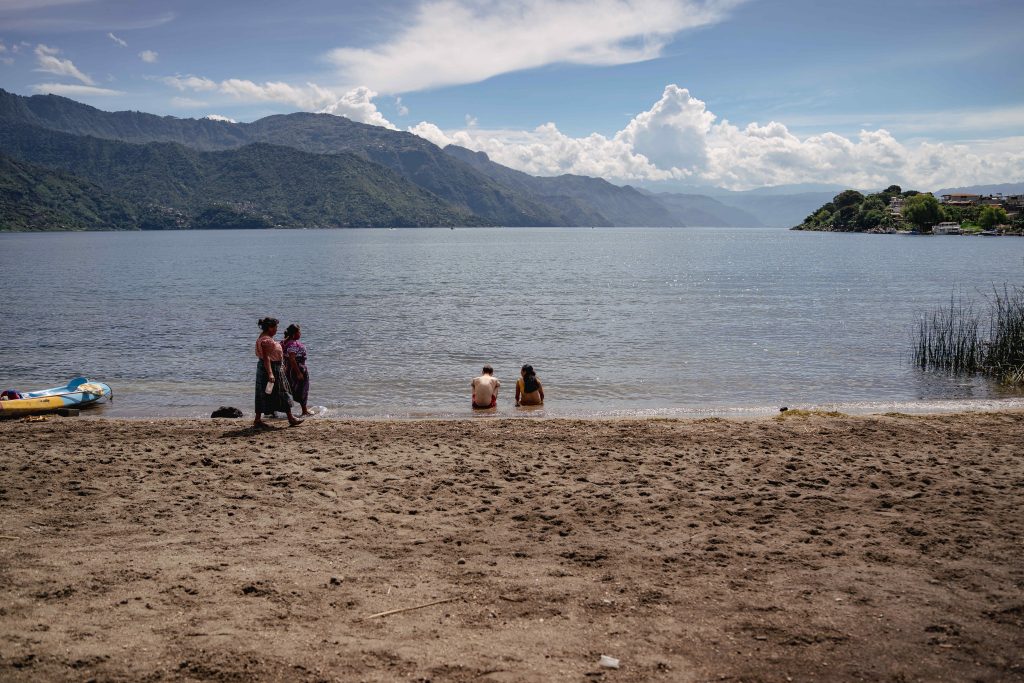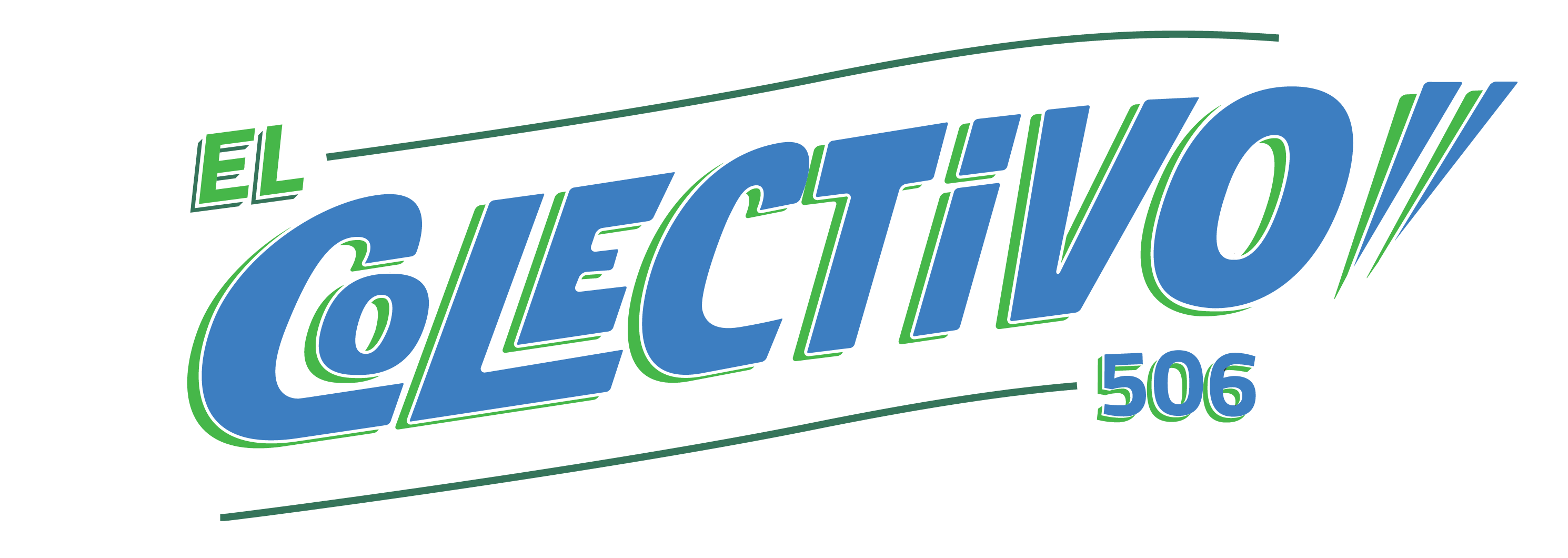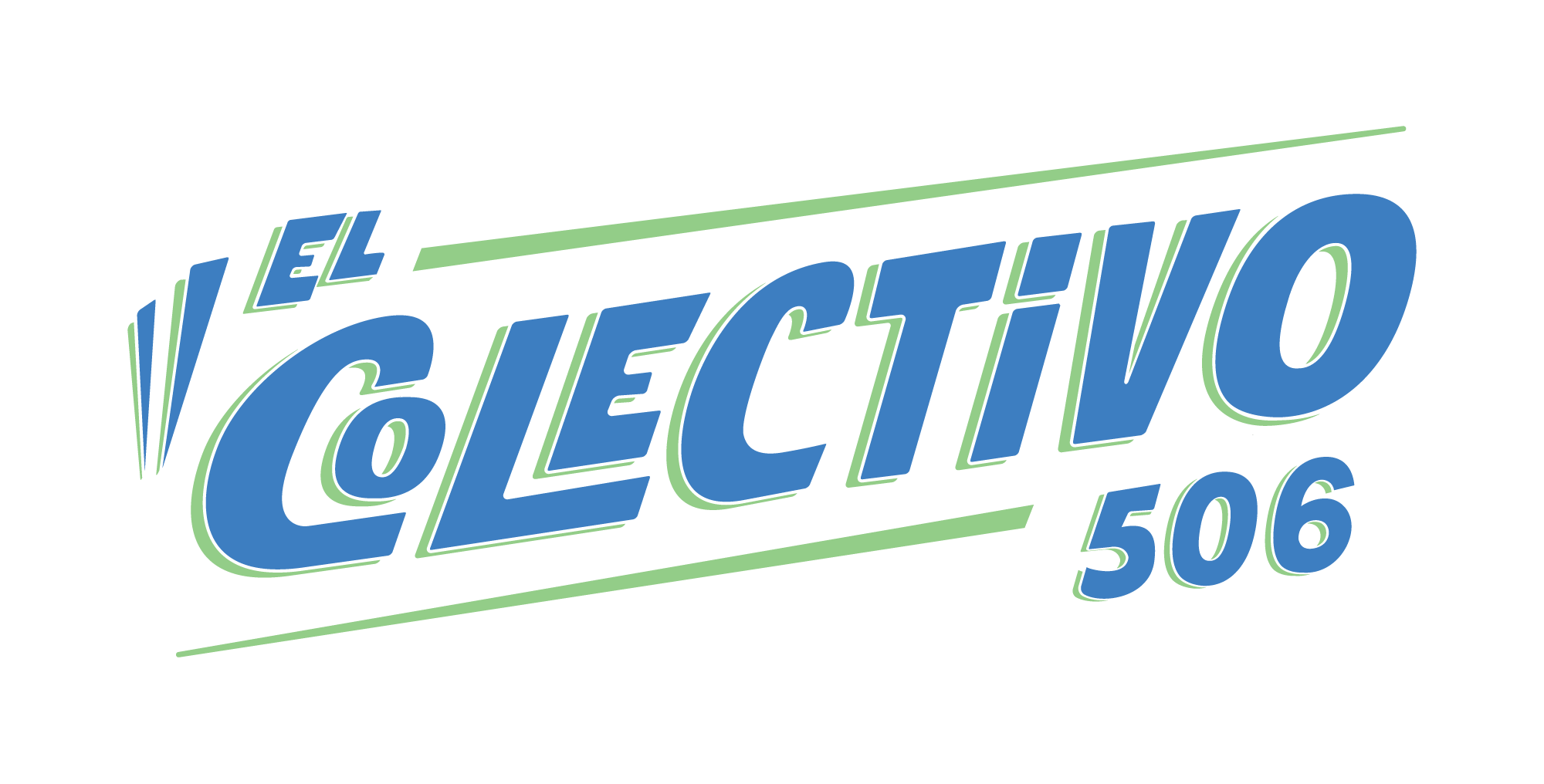In March 2025, the municipality of San Pedro La Laguna approved the “Regulations for the Ecological Rights at Lake Atitlán.” Among several topics and actions to protect the lake, it included articles that prevent privatization, indicating that the beach area is a space for public use. This issue is not new in the area. The community has been advocating for it for at least 16 years. Today, their work is backed by a legal provision.
Journalist María José Longo Bautista and the team at the Guatemalan media outlet Agencia Ocote tell the story in this report, which published on their website on July 8, 2025. It has been adapted and translated for co-publication by El Colectivo 506.
Agencia Ocote and El Colectivo 506 received support from the Regional Coalition on the Right to a Healthy Environment (COREDAM) and the Association for Generations of Peace (ASDEPAZ) to produce this article from Ocote, as well as El Colectivo 506’s piece “Guaranteeing water access isn’t easy. ASADAs show that it’s possible.”

On the shores of Lake Atitlán, in the municipality of San Pedro, it’s common to see women walking with objects in their hands. A can they found on the beach. A plastic bottle floating in the water. Almost as a reflex, if they find something that doesn’t belong in nature, they take it away.
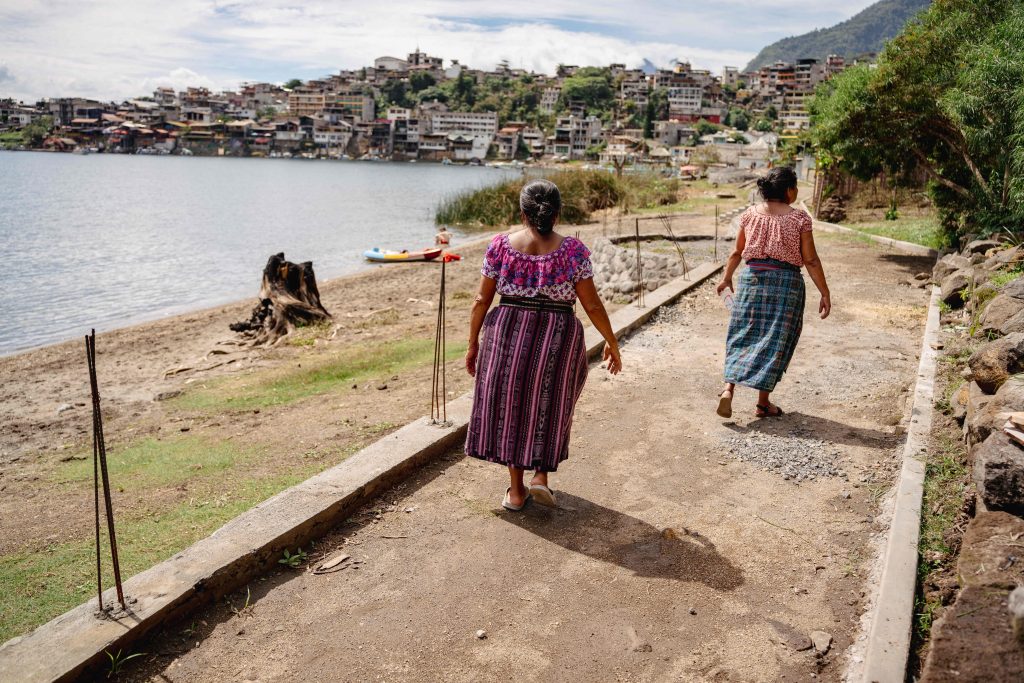
Many of them belong to a collective called Guardianas del Lago (Guardians of the Lake). They became popular for their cleanup campaigns, but this group of indigenous women does much more to protect the lake from pollution.
They seek to prevent the beach from being closed off for the exclusive use of paying customers; from development so close to the water that people can no longer walk around the lake; and from actions that impede public access to the shore.
They do this through voluntary monitoring and reporting, in addition to raising awareness and sharing information with fishermen, farmers, and residents of San Pedro about the importance of caring for and protecting the public beach.
The area surrounding Lake Atitlán is home to exclusive areas with large and luxurious villas, as well as businesses such as hotels on land that no longer belongs to the people who live around the lake. These spaces often have exclusive beaches accessible only to those who pay.
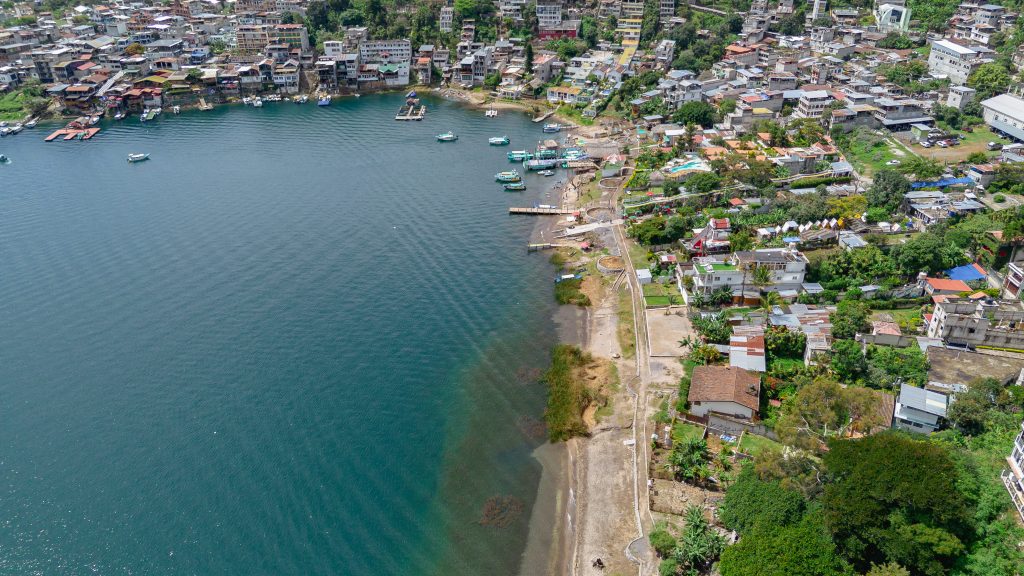
Among the municipalities along the shores of Atitlán, San Pedro la Laguna is a remnant that resists. A large portion of its territory still maintains a public beach in its natural state, consisting of sand or rocks. It’s a space where it’s common to see people walking, swimming, or sitting and contemplating the landscape.
The origen
In 2009, an alarm went off at Lake Atitlán. The largest bloom in its history of cyanobacteria, a blue-green algae that consumed the oxygen in the water, caused the death of fish and other species, altered the color of the lake, and produced a foul odor.
The population became concerned. Government institutions and other organizations began to react.
In 2009, the municipality of San Pedro la Laguna signed a document to establish an area of the shore for public use. Ten meters wide, starting at the water. It justified the decision as a measure to protect natural resources, although it did not establish penalties for its infringement.
At the same time, small groups of women from the municipality, neighbors organized in their communities, began carrying out specific cleanup activities.
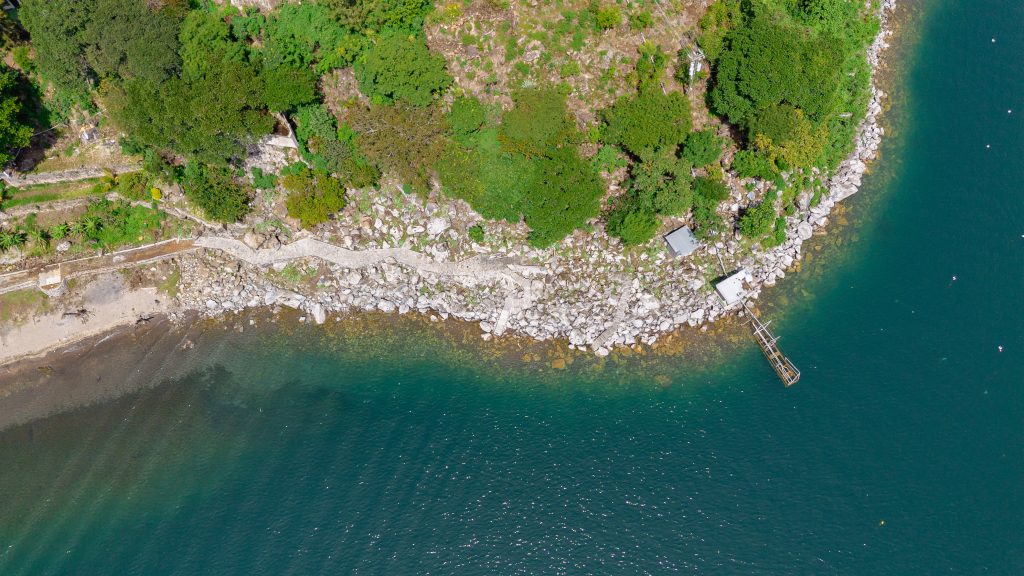
The women’s voluntary work to ensure that public beach spaces are respected is not random. It is based on their ancestral knowledge and community awareness, and is supported by science.
Starting in 2018, when the women formed the Guardianas del Lago Collective and the Tz’unun Ya’ Collective, they have listened to environmental and legal experts. They understood the scientific importance of the space and the need for further regulation to govern the use of the public beach. That same year, the members of Tz’unun Ya’ began working on a proposed regulation.
Defend the beach, take care of the sand
Flora Virginia Samol González lives in San Pedro la Laguna. Like at least 45 other women in her neighborhood, she is part of the Guardianas del Lago collective.
She enthusiastically shares that in her community, Tzankiaqaay, there are more than 10 meters of public beach. Through dialogue and discussions, they’ve gotten landowners and farmers to agree to allow up to 20 meters, she says—enough space for children to play and for teachers to take students for recreation. “If it were private, we would have to ask permission,” says Samol.
She says that in addition to protecting the space so it remains public, members of the collective also ensure that sand extraction is not carried out. People often collect sand to sell for use in construction.
When collective members see someone doing this, they usually report it to City Hall, although she says there’s a more effective way: convince them it’s wrong.
She proudly recounts that in the first months of 2025, members convinced two women who were scooping sand from the beach to join Guardians of the Lake instead.
Sand is the interface between water and land. It acts as a filter, a natural barrier that traps elements that can pollute the lake; it cushions the effects of flooding and helps protect the shoreline. Preserving the sand allows the ecosystem to survive for other species, such as snails and crabs.
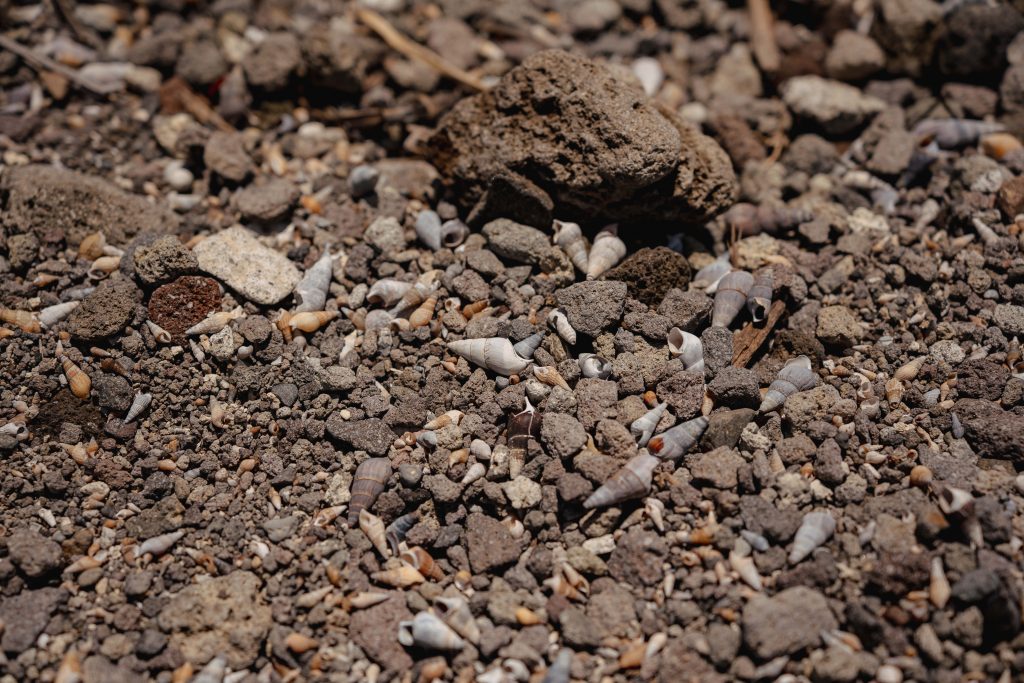
“As women, we don’t see beaches solely as a space for leisure,” explains Nancy González. “We see the lake, the beaches, as a space for connecting with Mother Nature, with our grandmother lake. We know the purpose of sandbanks. Where there is sand, it’s solid beach. Where they extract the sand, they are swampy beaches.”
The collective has also had to deal with farmers. Samol still remembers the insults she received from two men she tried to talk to, trying to convince them they couldn’t grow crops so close to the lake. The Guardians of the Lake and members of the Tz’unun Ya’ collective have observed that if crops are too close to the lake, farmers’ fertilizers pollute the water even more.
“They told us that we should find a job and stop cleaning,” she laments.
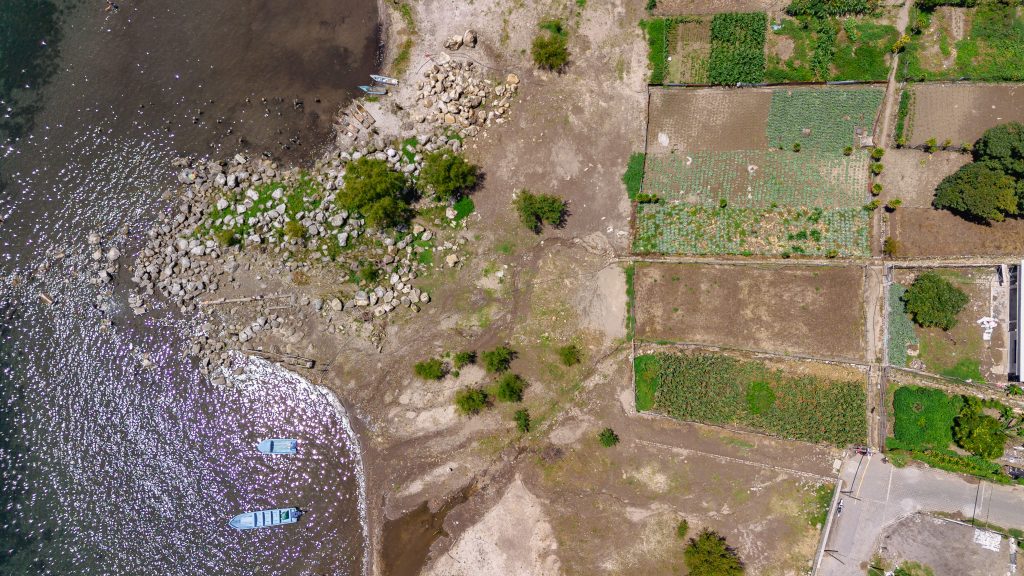
The third group that is against their work is made up of business owners. Loida Delfina Navichoc Gonzáles and Elsa María Yojco Juárez—speaking in their native language, Tz’utujil—explain that in 2019, they clashed with the owner of a lakeside resort, the Sababa Hotel.
Supported by Nancy González, who interprets their words into Spanish, they claim that the owner tried to expel them from the public beach in front of the hotel and wanted to remove the sinks they use to wash in the lake.
They collected signatures from 150 women, and Edwin Mauricio Méndez Puac, the mayor in office at the time, supported them in their bid to keep the beach public. According to the women’s recollections, he accompanied them to the site and explained to the owner that the space was public.
Agencia Ocote contacted the Sababa Hotel by phone to obtain their response; our calls were not returned. An email was sent to the address registered on their social media accounts. When a response is received, it will be added.
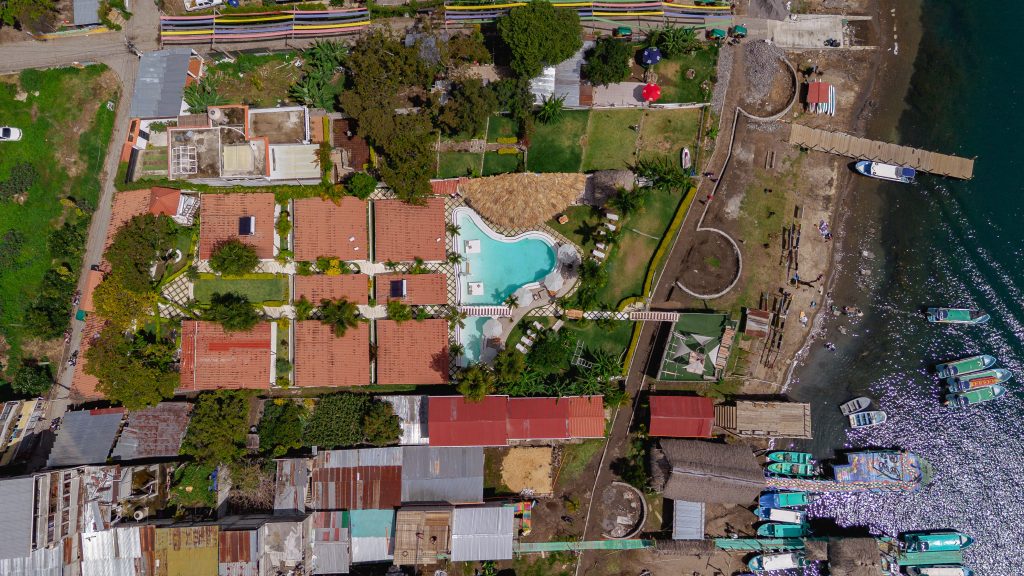
The occupied beach
According to the Tz’unun Ya’ Collective records, San Pedro la Laguna has 7.5 kilometers of beach. Seven kilometers are “free” and half a kilometer is “occupied.” Municipal data differs slightly. The municipal government estimates that there are seven kilometers of beach, one kilometer is under construction, and six kilometers are public.
There are areas of the municipality where public space has disappeared. You can’t walk along the lake.
There is no public beach next to the boat landing that provides transportation between Panajachel and San Pedro La Laguna.
The surrounding area is made up of buildings adjacent to the lake. These buildings are made of cement or wood, some with private docks. Most of them house cafés, restaurants, or bars.
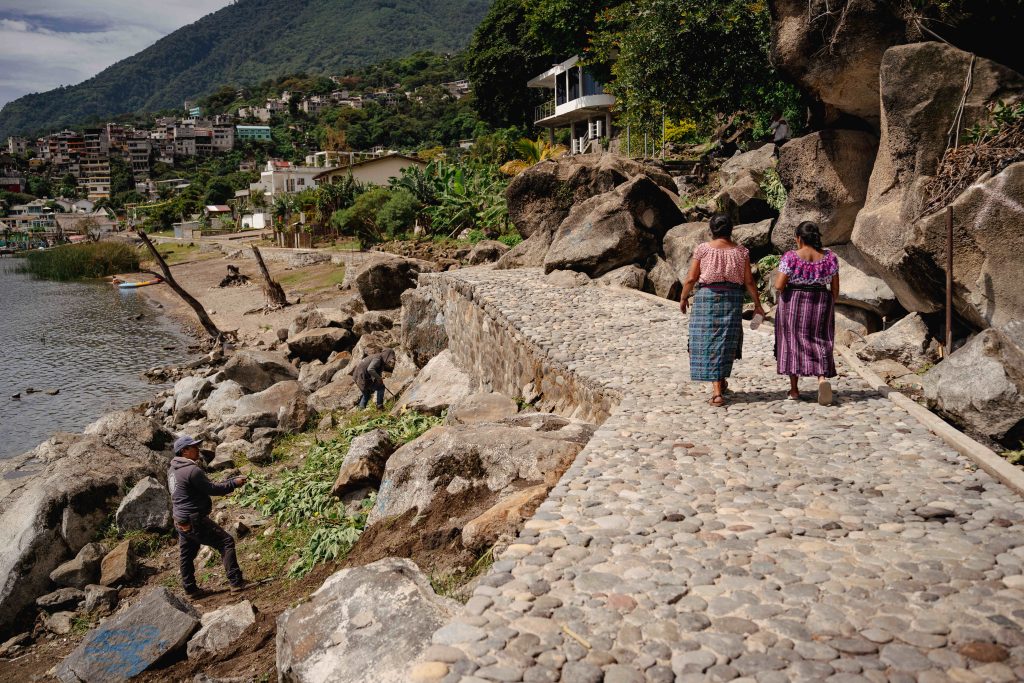
Regulations
Although the 2009 municipal act established a 10-meter wide public space along the entire municipality’s beach, this document is not a law. It does not provide for public resources or sanctions, or establish municipal personnel to enforce compliance.
In the absence of a legal document approved by the municipal authorities, the collective Tz’unun Ya’ led the effort to propose one, starting in 2018.
The two collectives, Guardians of the Lake and Tz’unun Ya’, presented at least four proposals for regulations to the municipality to protect the beach.
In March 2025, the municipality finally approved the Reglamento para el Derecho Ecológico de Abuela Lago Atitlán (Regulations for the Ecological Rights of Lake Atitlán). Articles 6 through 9 establish regulations for the beach area and public access. The new document now establishes fines ranging from Q300,000 to Q50,000 (approximately US$39 a US$6,500]
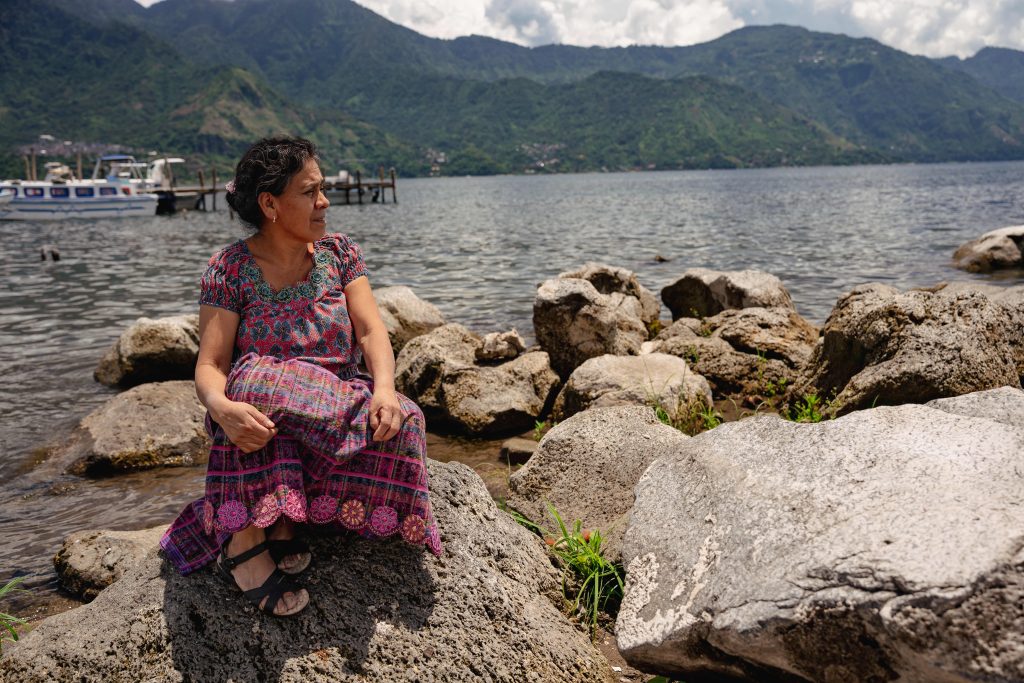
The lowest fines are established in the regulations as general prohibitions: a fine of Q300 to Q5,000 ($39 a $652) for placing any element on the beach, natural or otherwise, that impedes or hinders public or free use.
Also prohibited are the installation of cables, antennas, or conduits of any kind; noise that disturbs the peace of others; rental awnings, plastic shades, or umbrellas; fences, flags, banners, or any other advertising signs; the operation of motorcycles, ATVs, or any other means of transportation; and leaving, dumping, or burning trash or waste of any kind.
The fine increases for those who violate so-called special prohibitions. The fine ranges from Q20,000 to Q50,000 ($2,607 a $6,500) for removing any element belonging to the beach and disturbing the area.
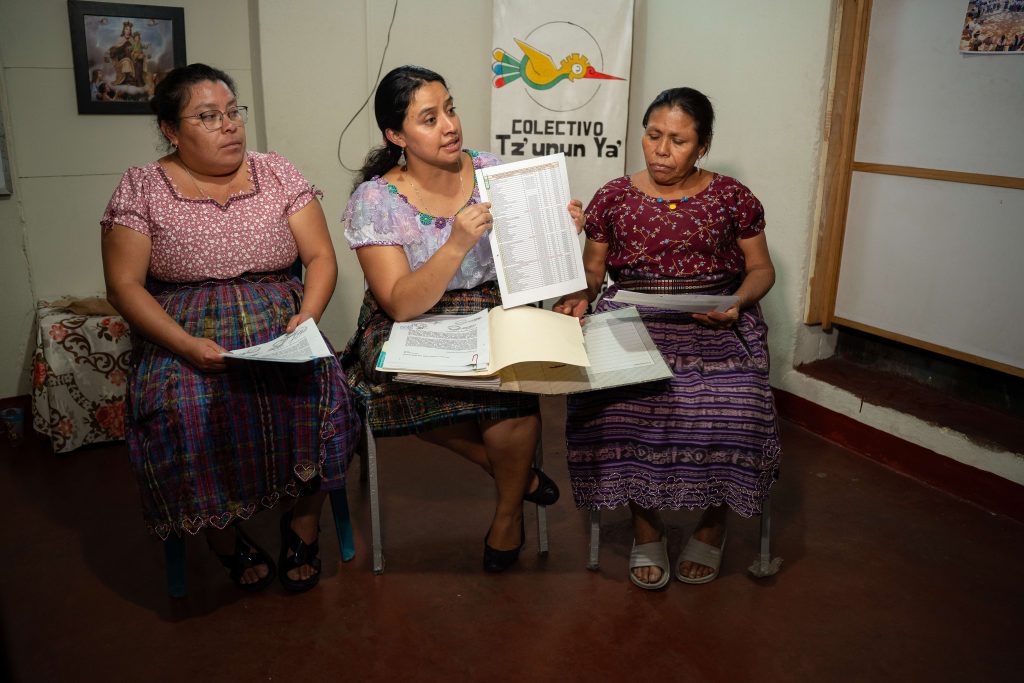
The list of prohibitions includes destroying or damaging beach signage; carrying out formal construction or building; carrying out agricultural activities; obstructing access to the beach area on rights-of-way; obstructing in any way the free public use of the beach area; creating illegal dumps; and extracting sand, rocks, and clay from the beach.
According to the law, on land where buildings adjoin the lake that impede the minimum 10-meter beach, owners can demolish and vacate the area, or compensate the community by building a trail and paying for the use of public space. The funds will be used for lake conservation.
If this is not done, the regulations stipulate that authorities must initiate a demolition process.
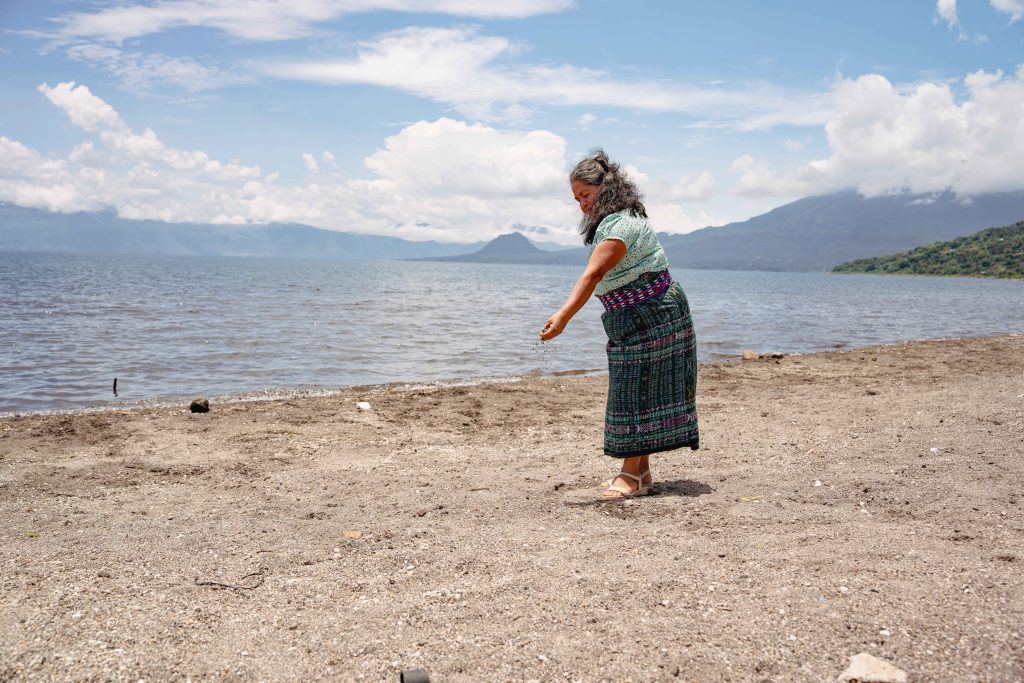
The regulation was approved in March and took effect in June. So far, however, no public funds or resources have been allocated for its enforcement.
“Budgeting will have to be established this year for all programs and projects. This regulation is progressive; its implementation will be immediate for some, while others require some medium-term attention, and others long-term. The long term we’re talking about is five years,” explains municipal employee Juan Manuel Chavajay, the sponsor of the regulation. His job at the municipality is to ensure compliance with the recently created regulations.
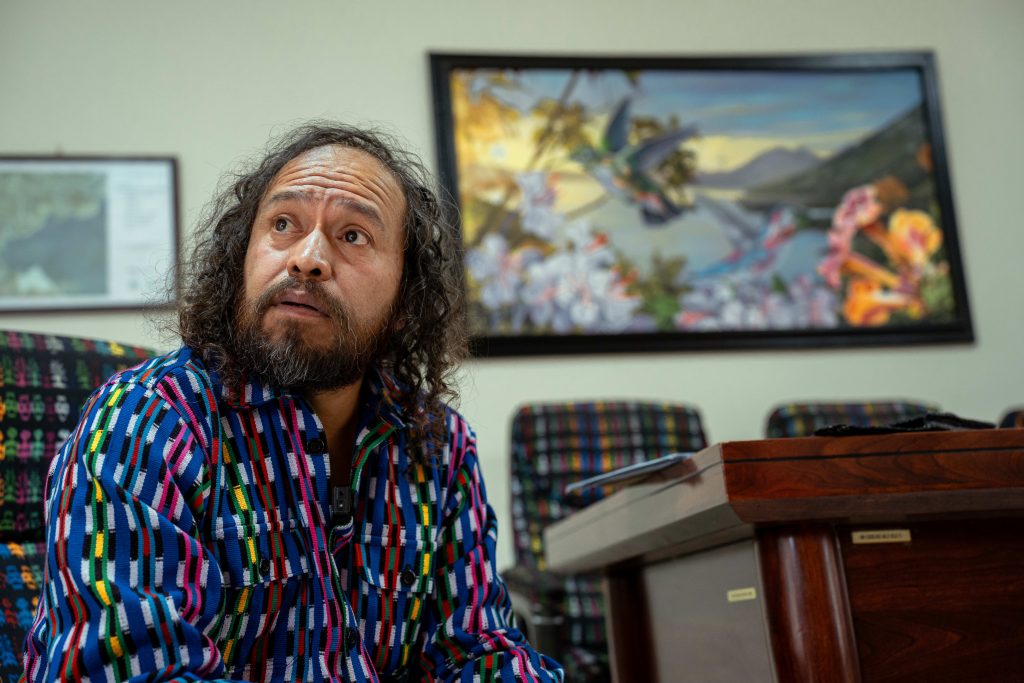
Other regulations in the document are related to the agricultural zone adjacent to the beach area; pollution; and fishing.
It requires the sole use of organic fertilizer and organic bio-inputs in the agricultural area, the planting of native and Creole seeds, the planting of corn at a distance of at least 40 meters from the beach area, the planting of at least three types of crops and their rotation, and the planting of native and fruit trees at a distance of at least 10 meters above the lake bed.
The agricultural zone is defined as the area from the public beach area up to the street, highway and sidewalks.
Fishing regulations prohibit fishing with harpoons or cast nets, as well as fishing during the closed season, from April to June. Only fishing for bass and tigerfish is permitted According to the regulations, fish farms may not be installed in the lake.
Attempts to circumvent the regulations
Despite the regulations, the municipality itself has made a decision that, according to the collectives, violates the law. The municipality is currently building a “Crab Cave Boardwalk and Tourist Center.”
The project, valued at Q2.7 million ($351,790) consists of concrete walls, paved ramps, decorative paving stones, pedestrian walkways, railings, and four seating areas with benches, steps, landscaping, and palm trees.
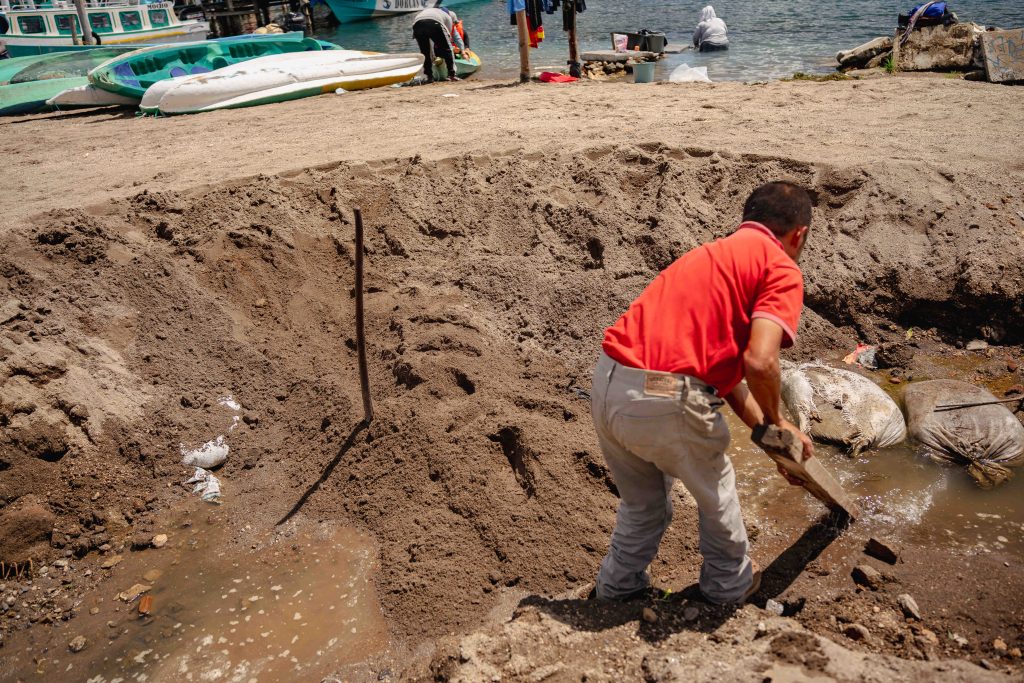
It will have lighting, two metal sculptures of a crab and a fish, and a wooden dock.
The women have called on authorities to avoid using cement on public beaches and opt for more environmentally friendly materials such as bamboo.

A controversial point: washing clothes in the lake
The regulations also govern laundry washing on the lake shores. This work is primarily performed by women and has become a point of connection between them.
The document establishes in Article 35 that using chemical detergents and soaps for washing clothes pollutes the lake.
The Guardians of the Lake say that washing of clothes in the lake represents an important space for connection. They propose that the regulation specify that washing clothes in the lake is allowed when natural cleansing options are used.
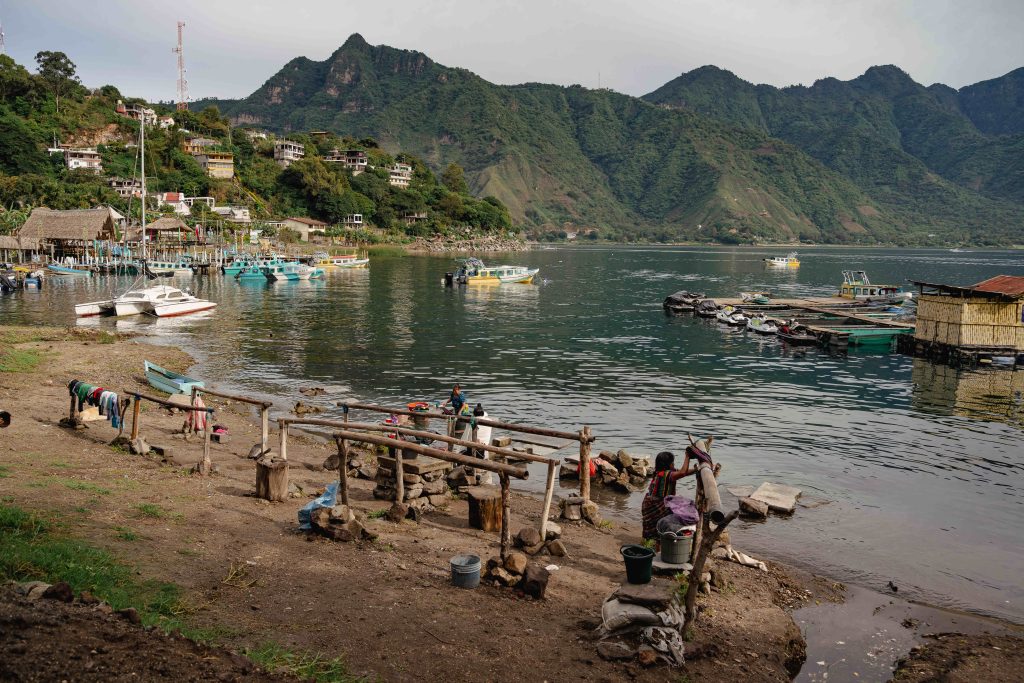
Among the natural alternatives that were once used were ash, black soap made from animal fat, and lime.
The Guardians of the Lake say that they are upset with the current mayor, Cándida González Chipir. They claim that since she took office, the municipality has stopped supporting the organizations that helped clean the lake. Previously, authorities provided them with the truck for cleanup work, garbage bags, and a repair shop. Now the collectives are the ones footing the bill.
The Guardians and members of the Tz’unun Ya’ Collective welcome the new regulations, but believe they cover too many topics and have gaps that could lead to rejection or legal action.
Although the members of the Tz’unun Ya’ Collective and the Guardians of the Lake presented four proposals to the community, they were not given any information about the final version before the regulations were approved. While the regulations that were approved do include some aspects from the groups’ proposals, they also contain additional elements that emerged from the community.
Chavajay, the promoter, says that the community is ready for any legal battle that may arise. With or without regulations, the women are convinced they will continue their work as protectors of the public beach.
Agencia Ocote consulted Juan Manuel Chavajay about the reason for allowing the construction of the municipal project on the public beach; his position regarding the discontent of the members of the Guardians of the Lake about the lack of support from the municipality; and whether they will have any dialogue with the women on the topic of laundry in the lake. The municipal worker indicated that he would consult with the Municipal Council before responding; when he does, his response will be added to the story.
